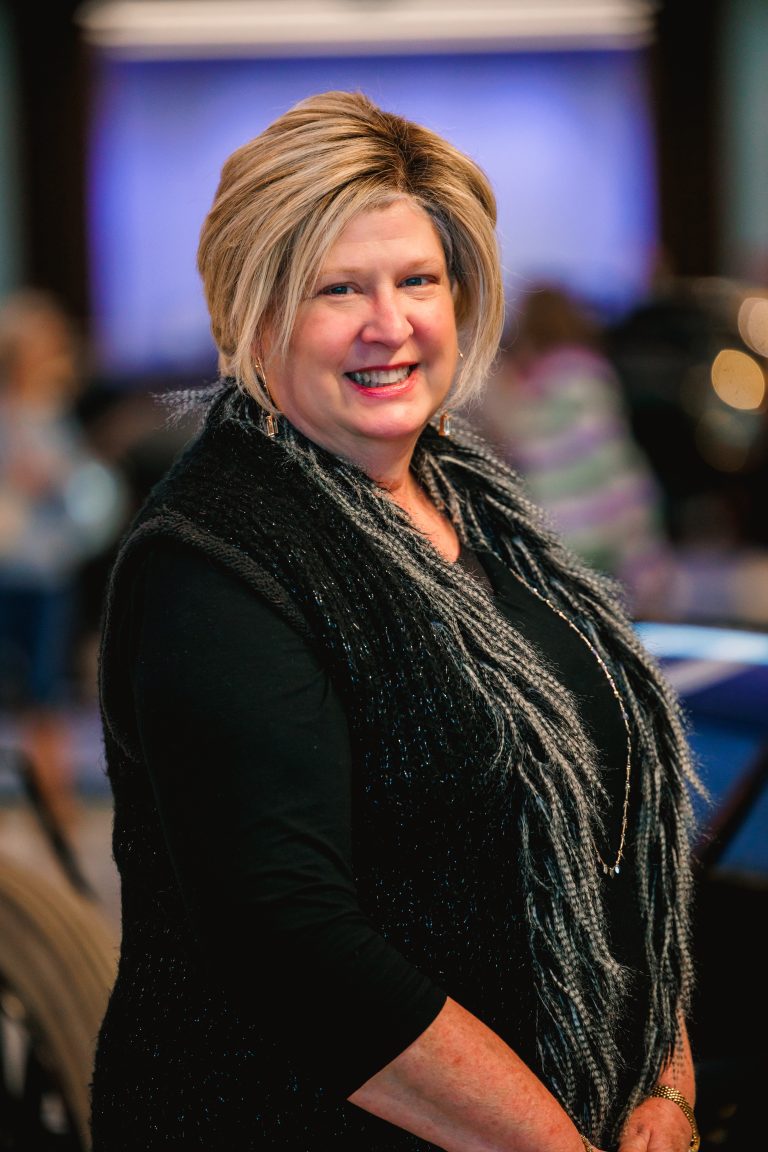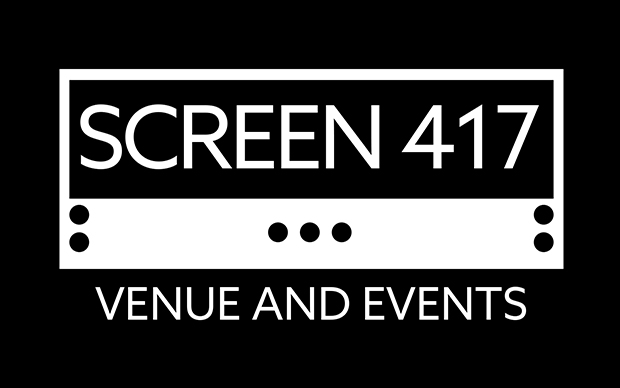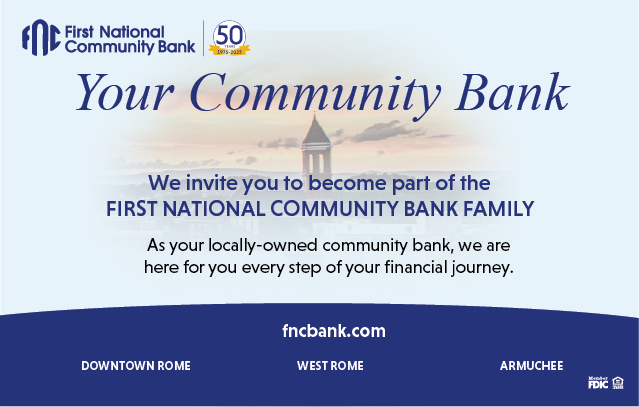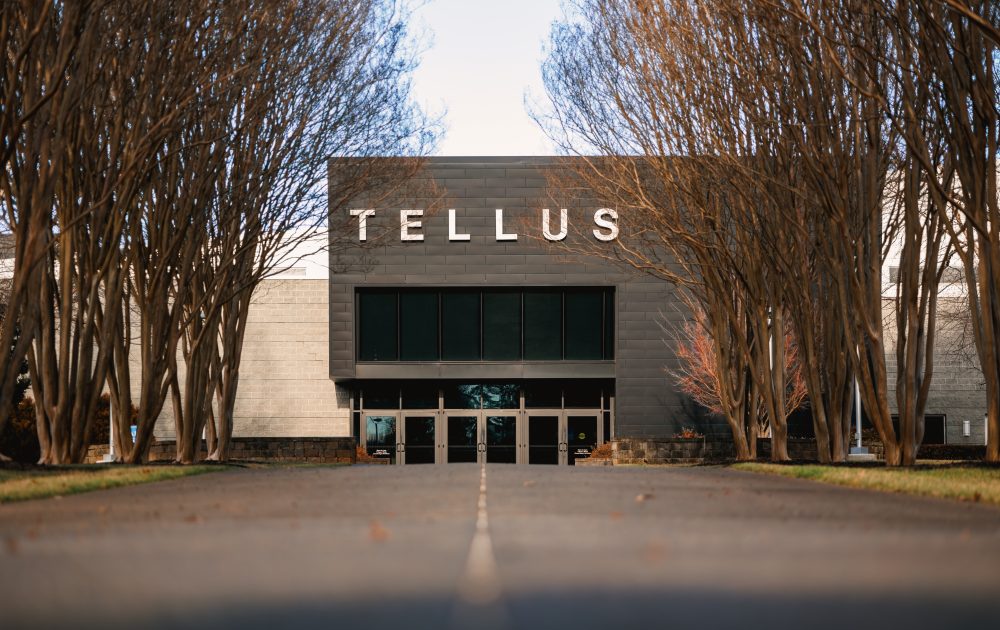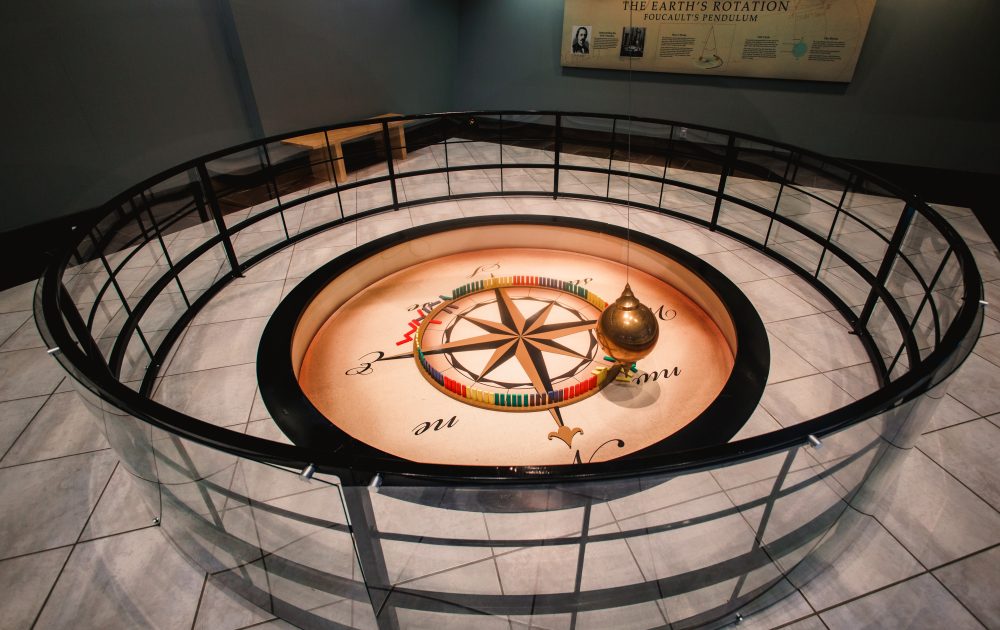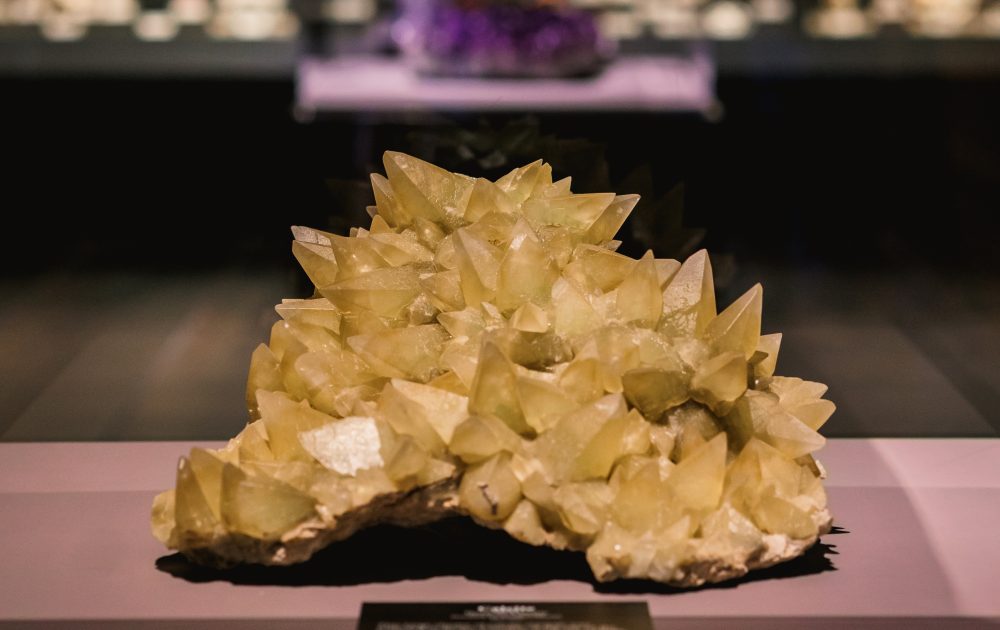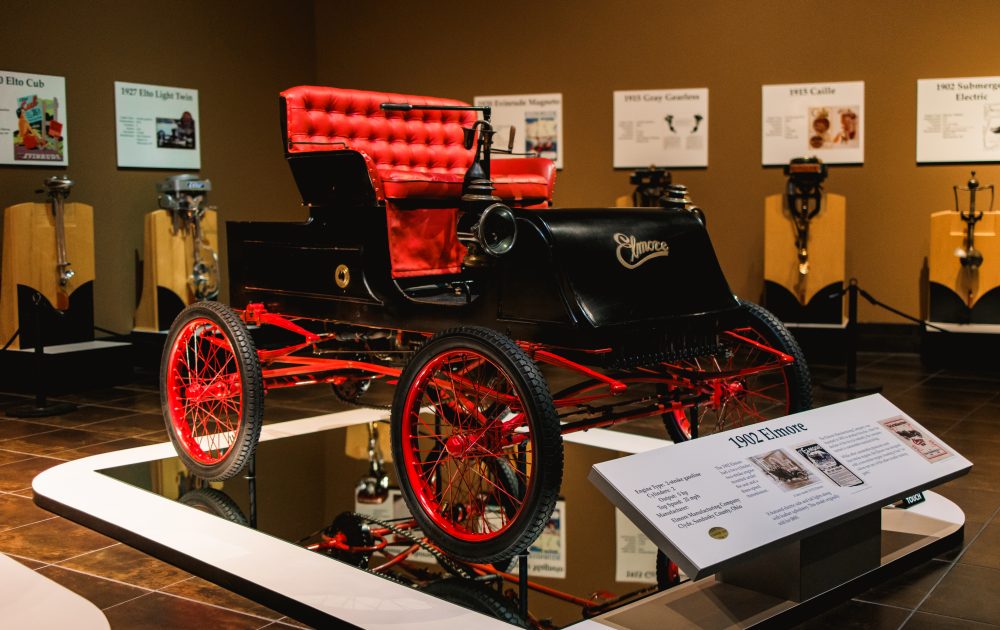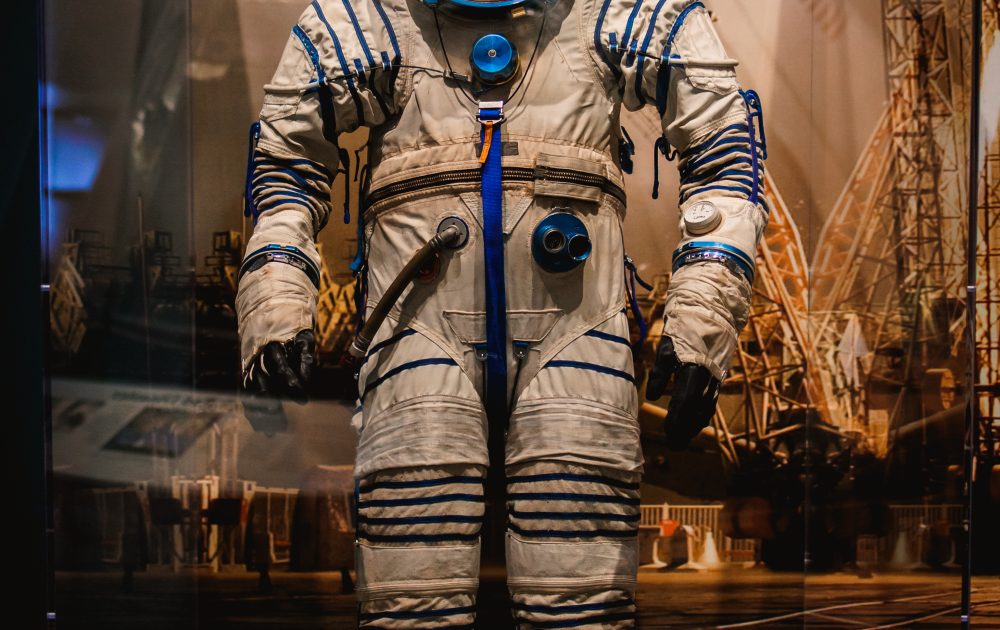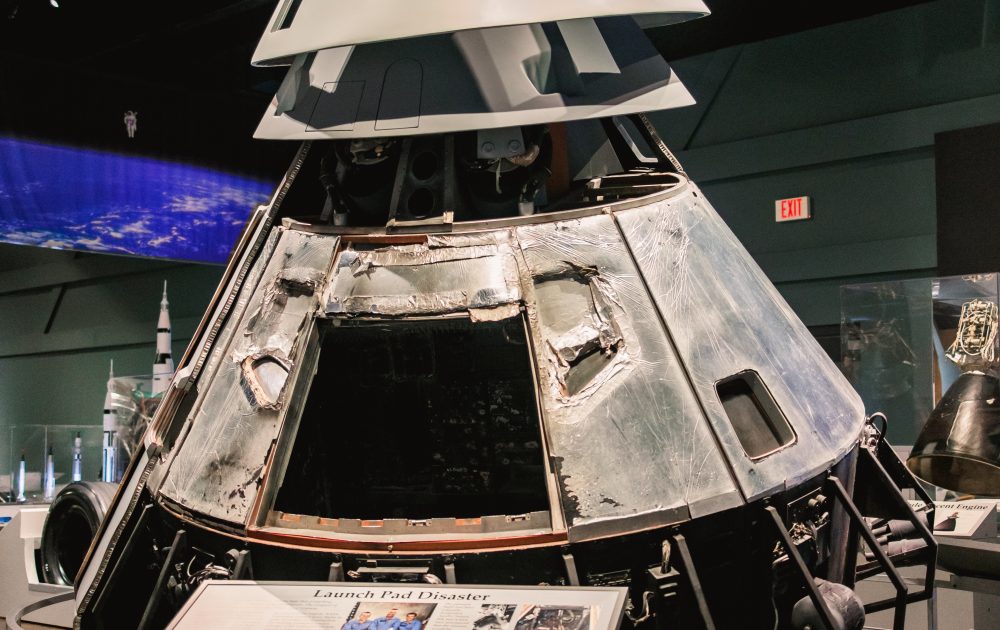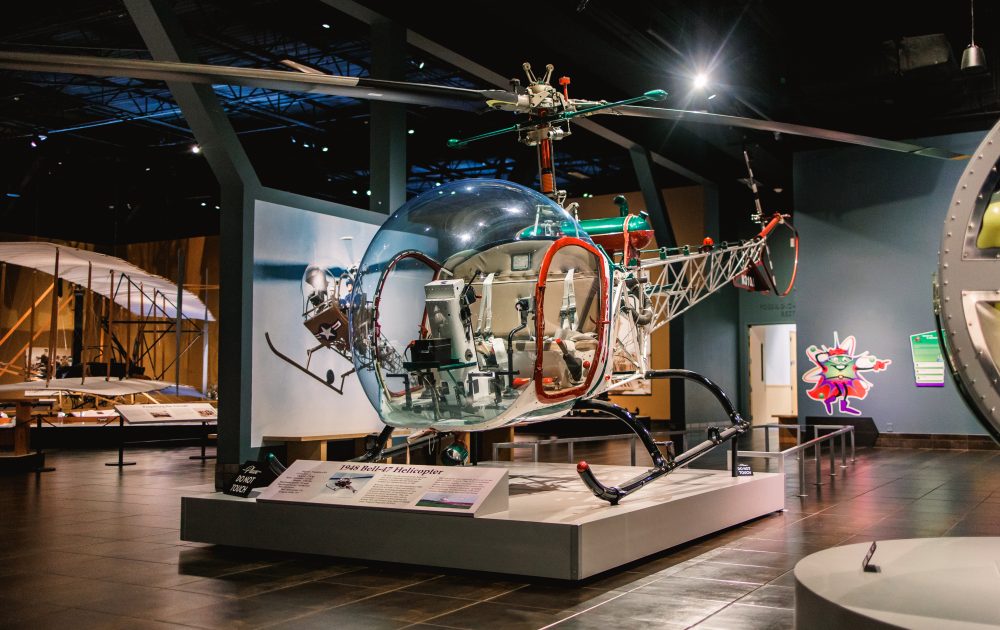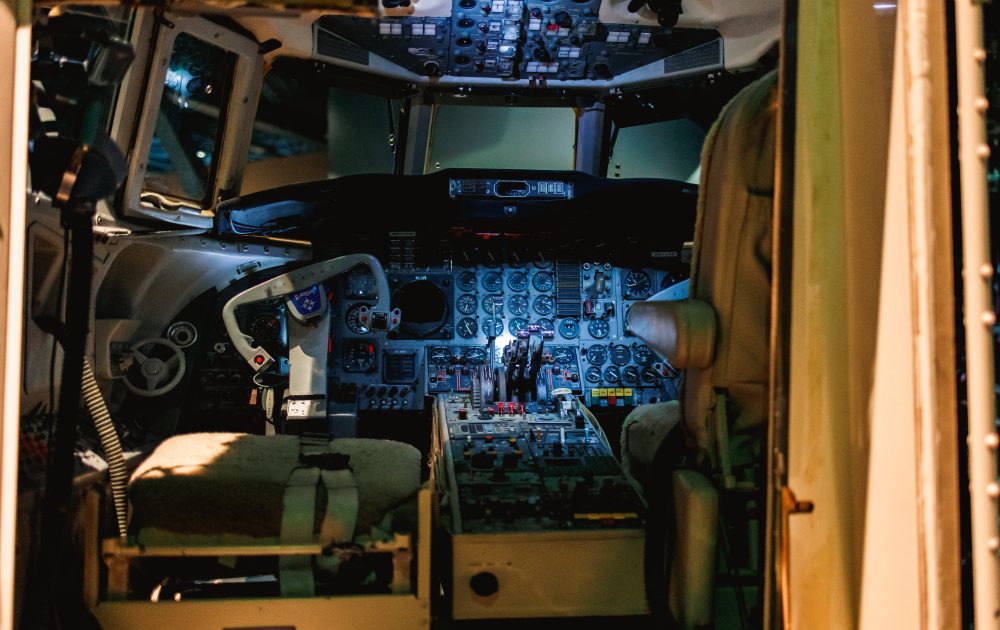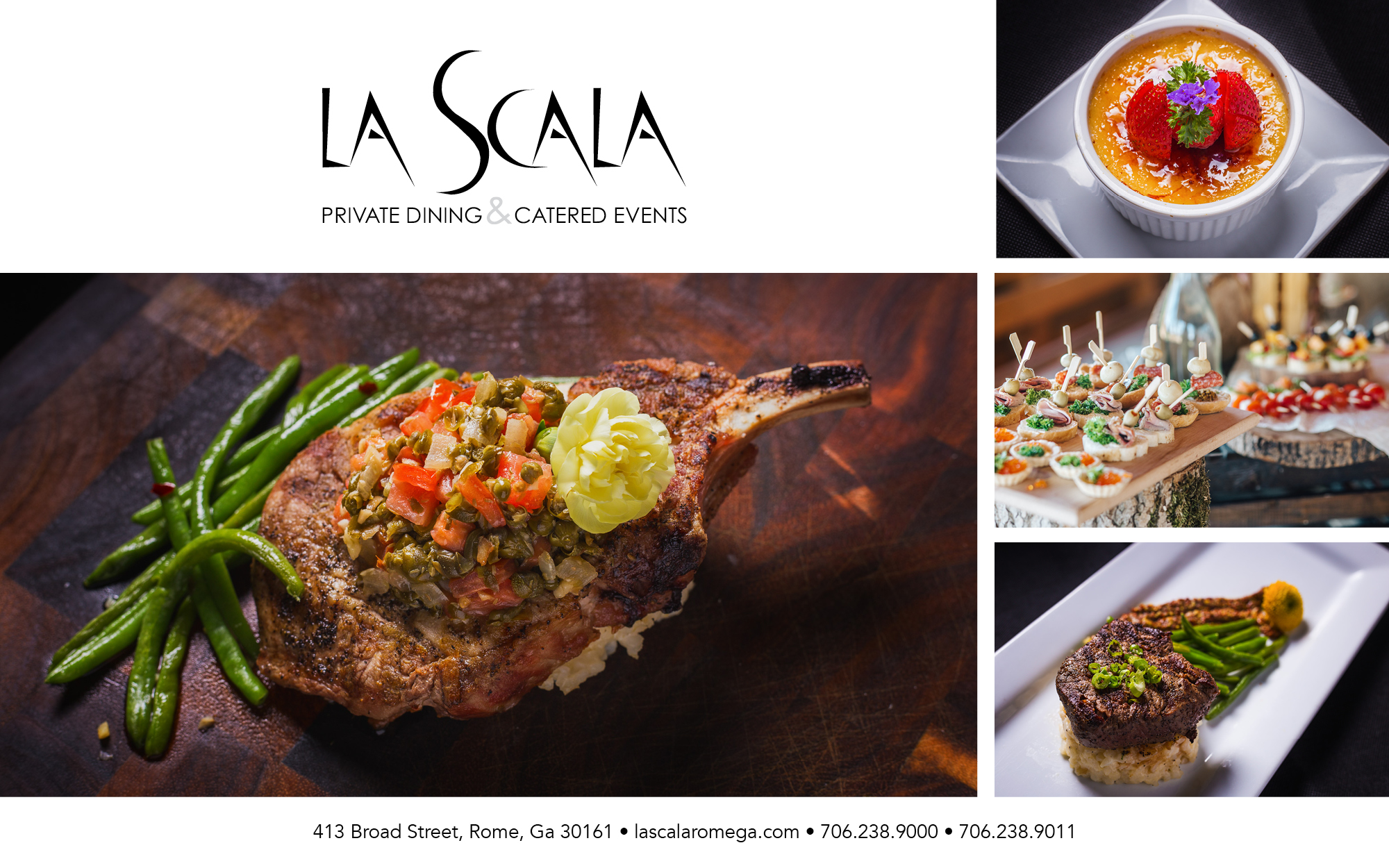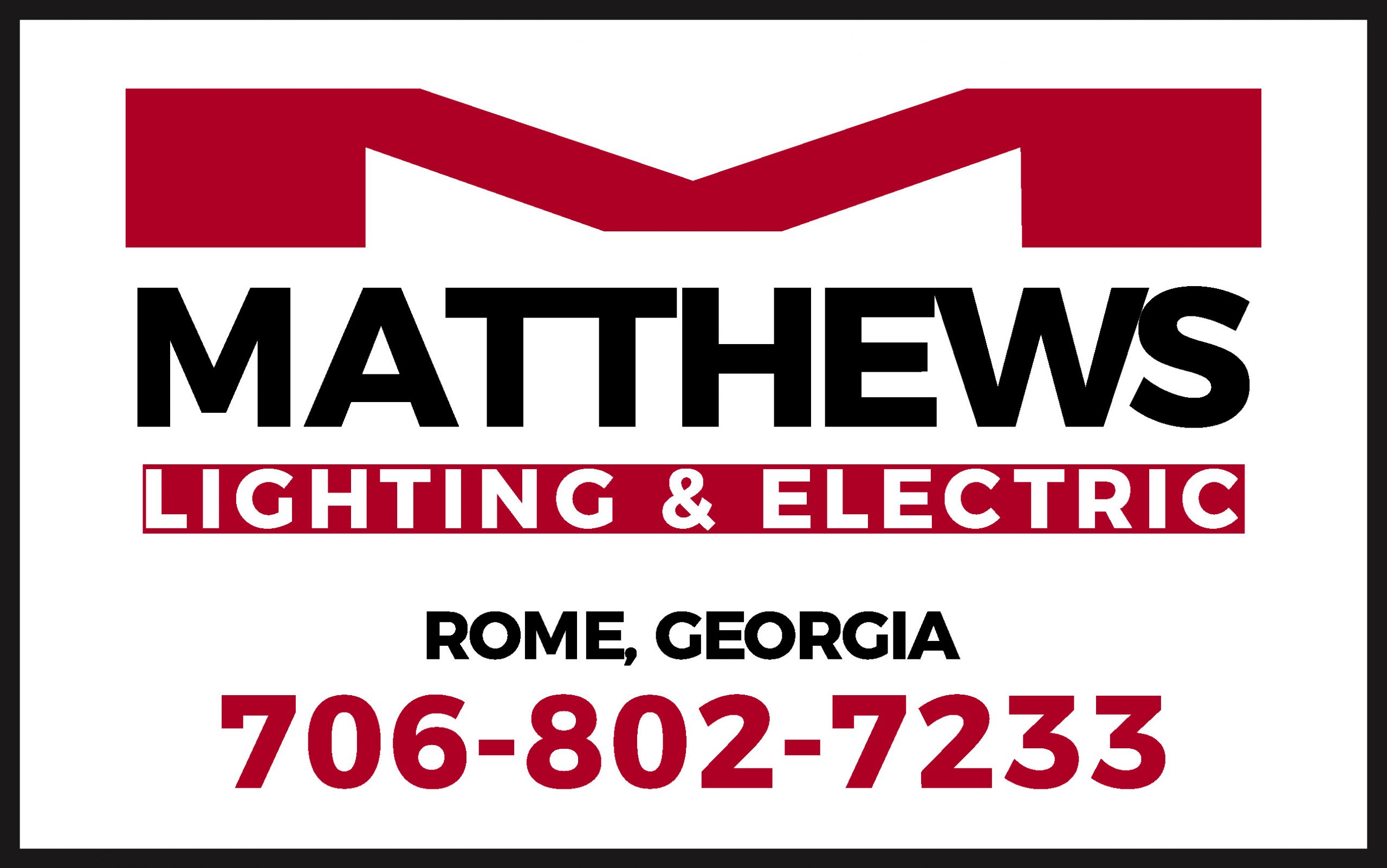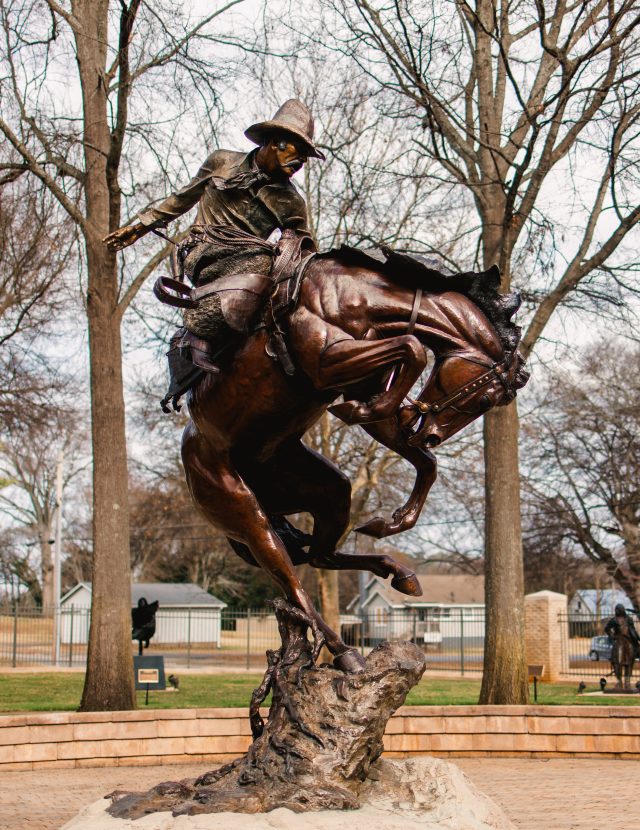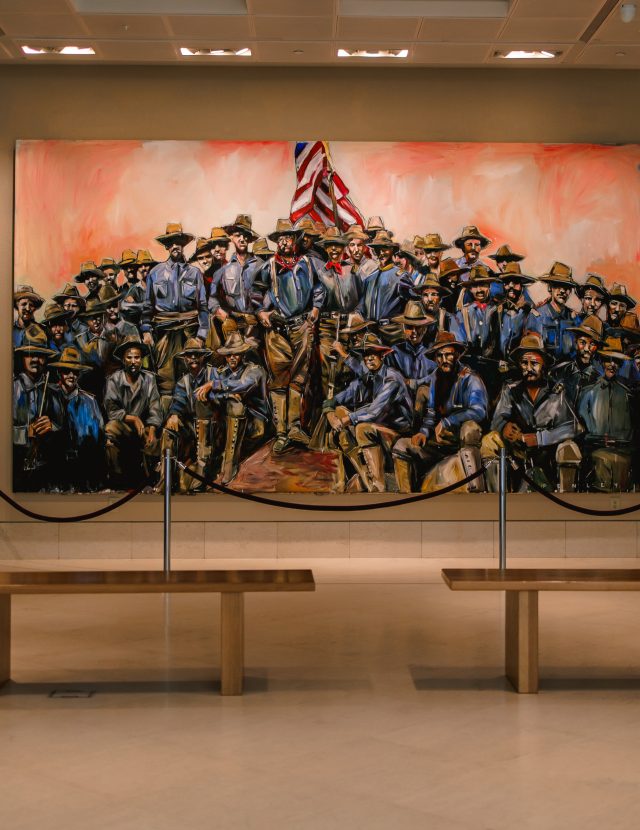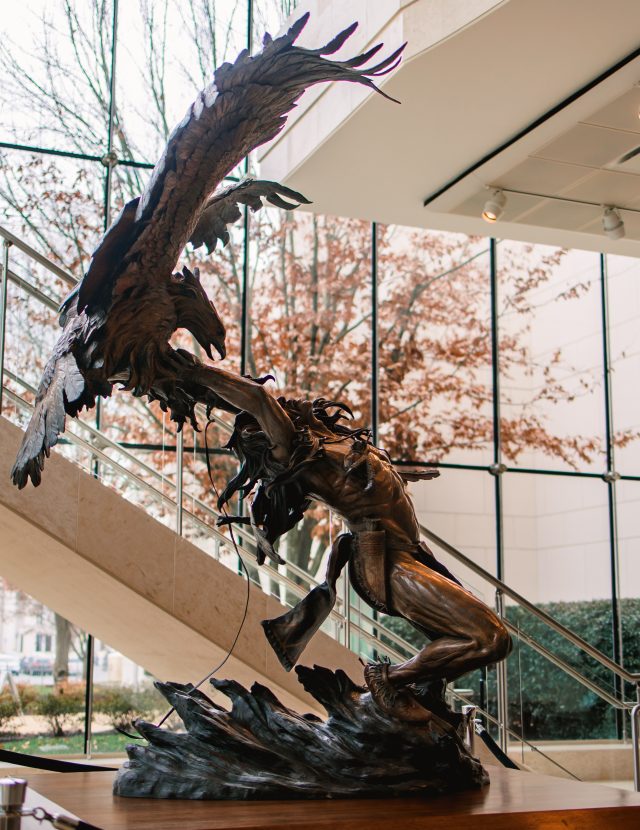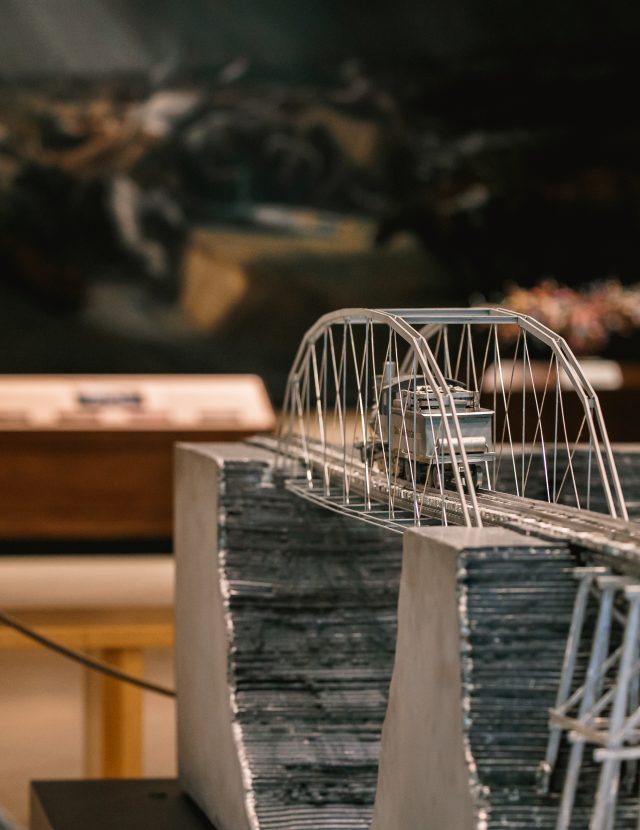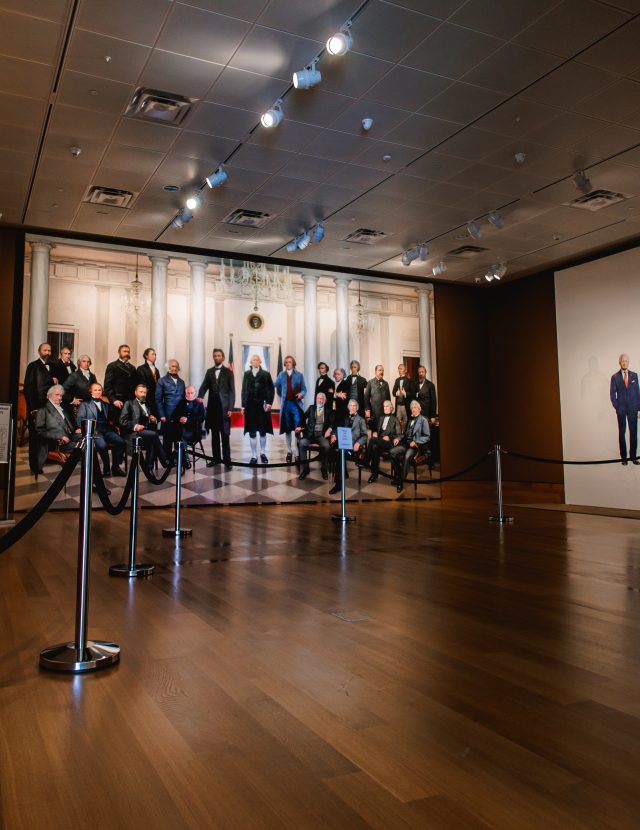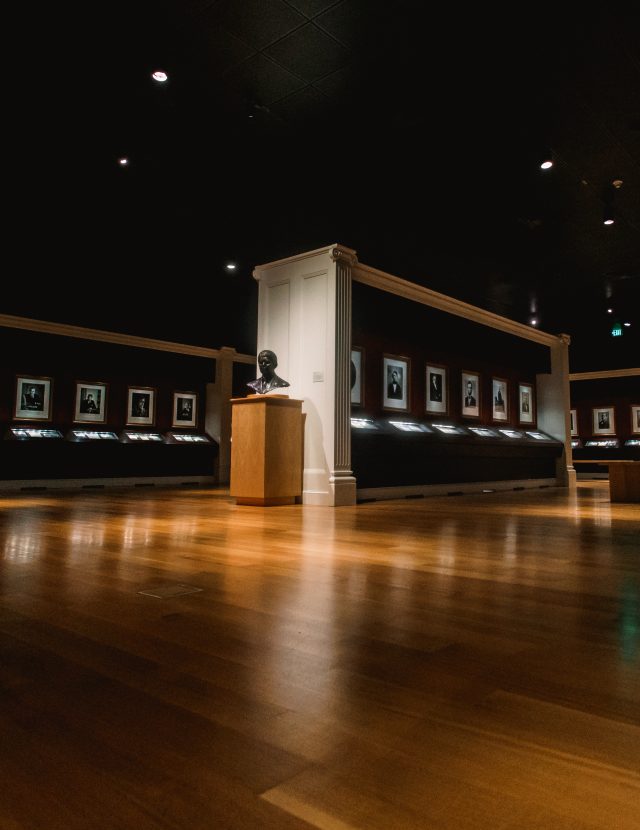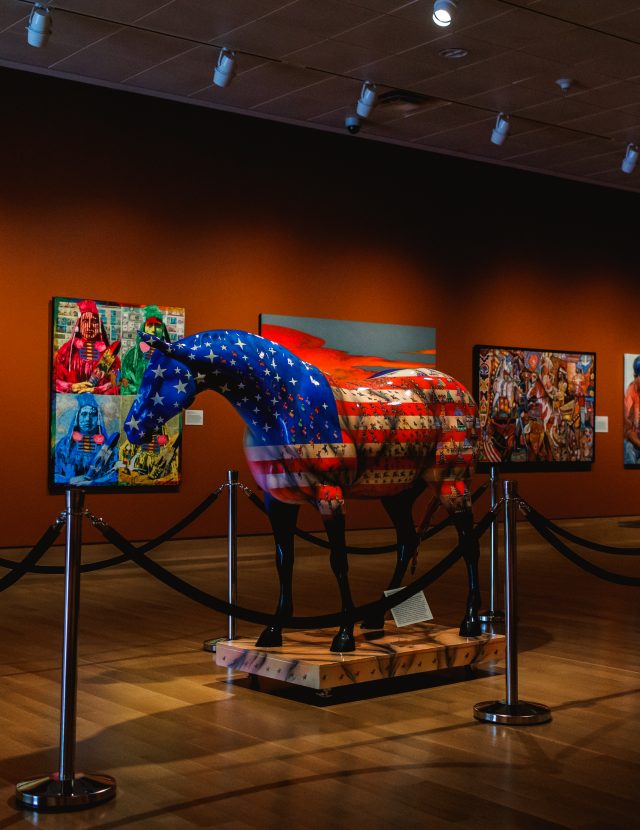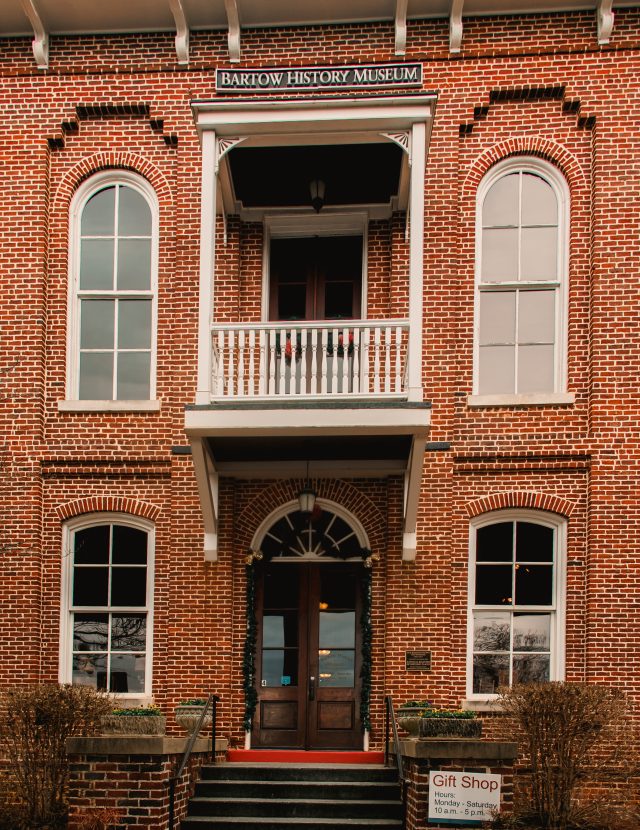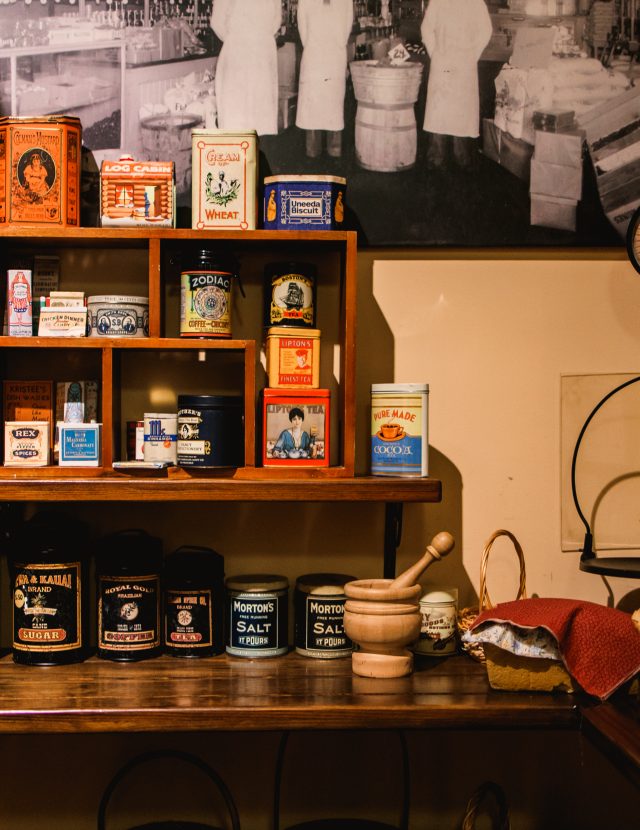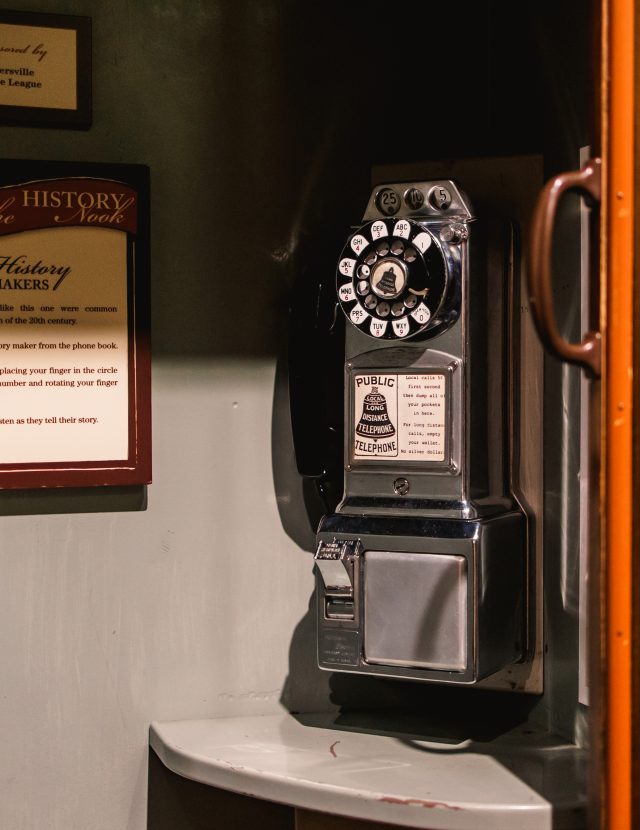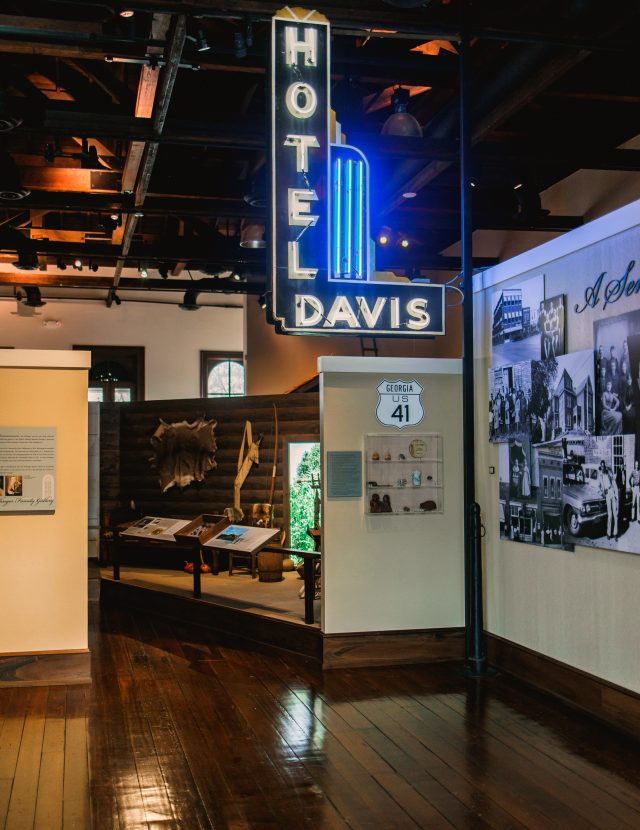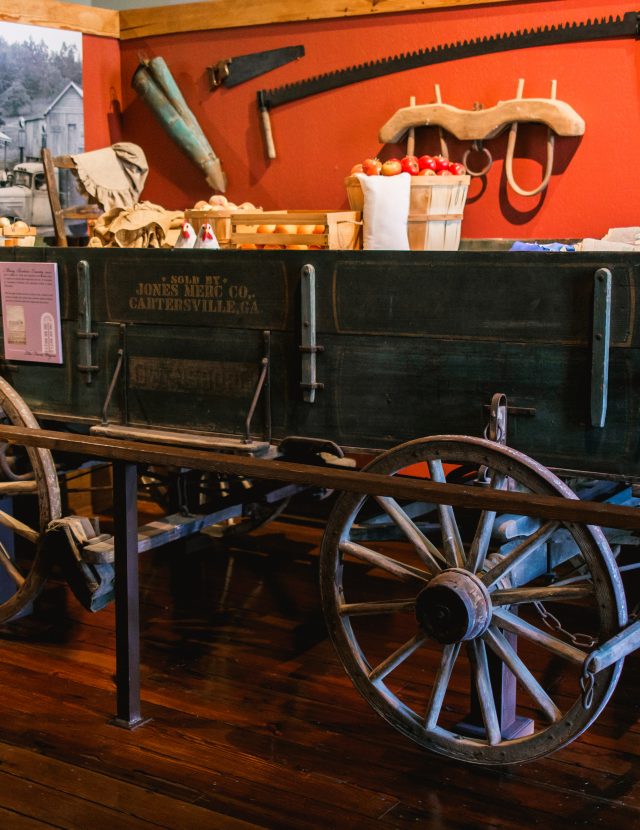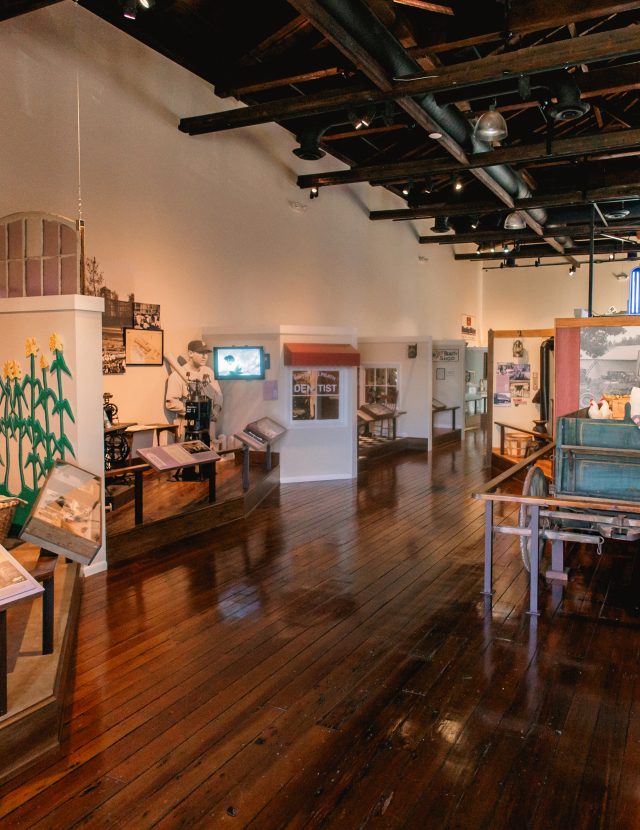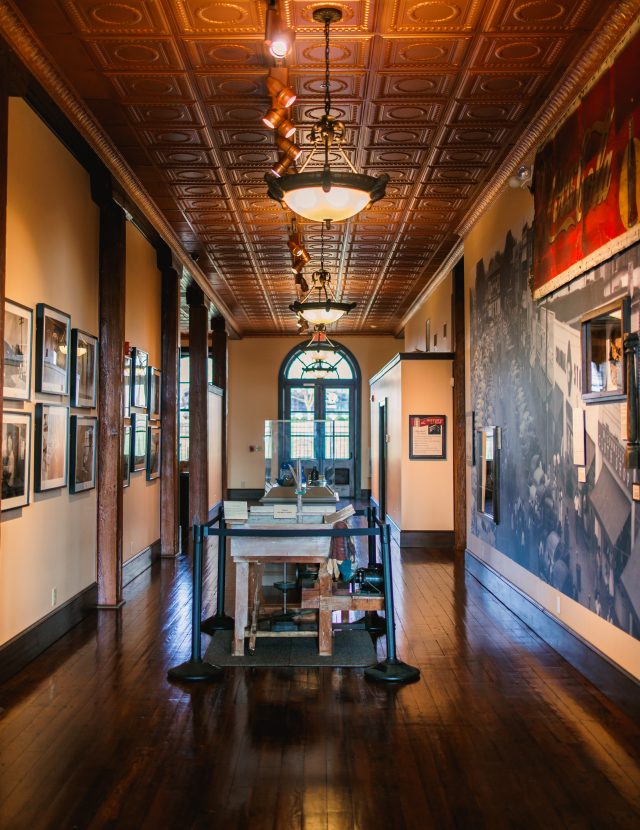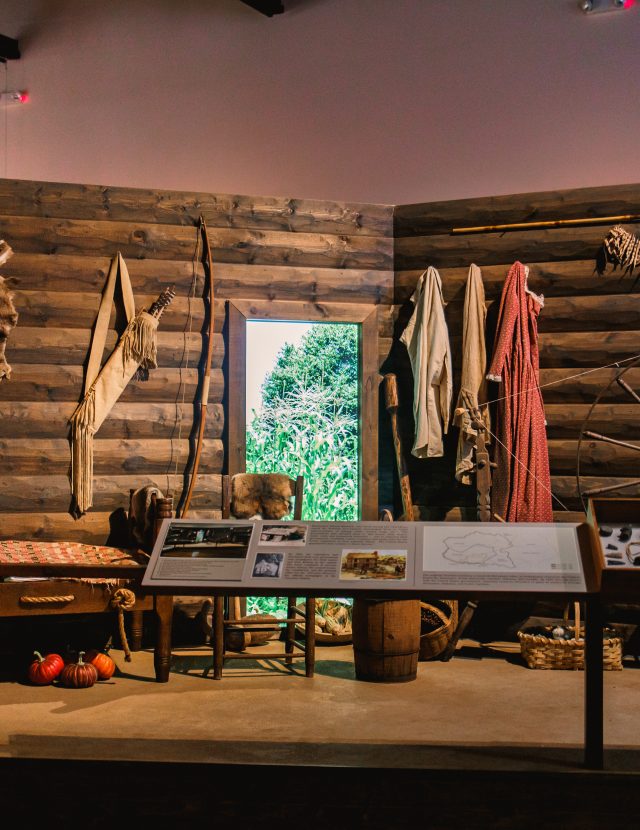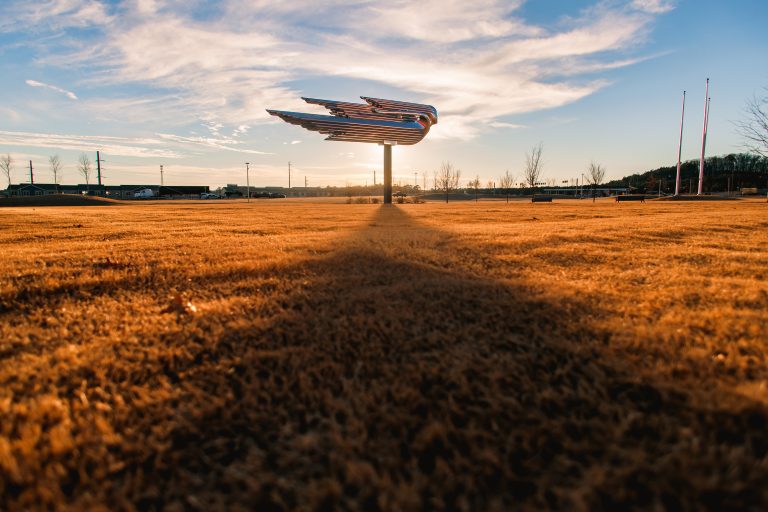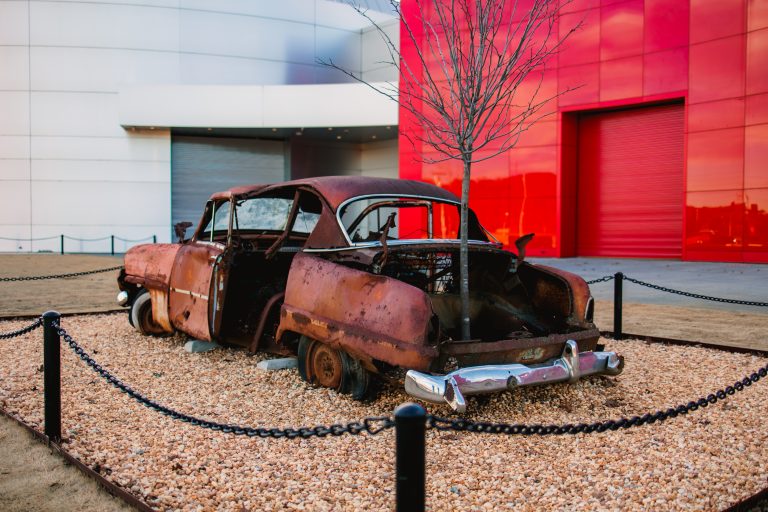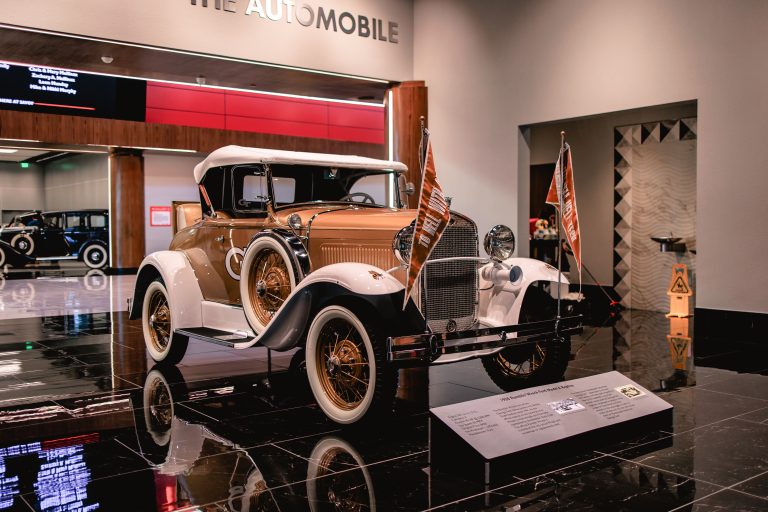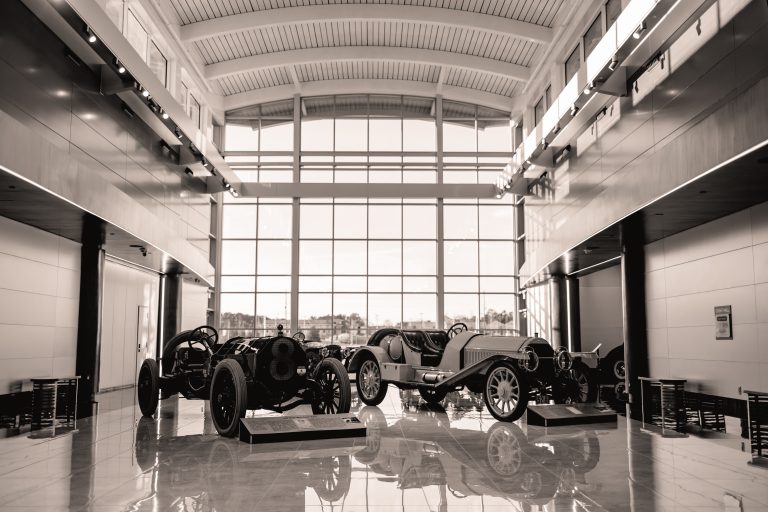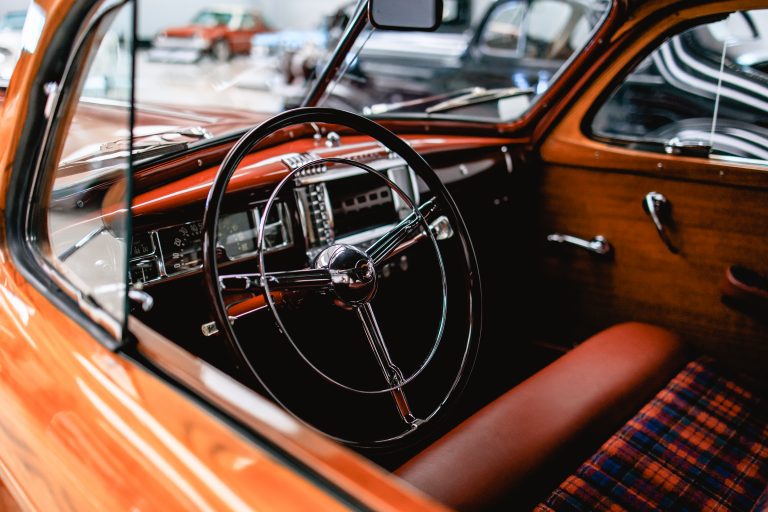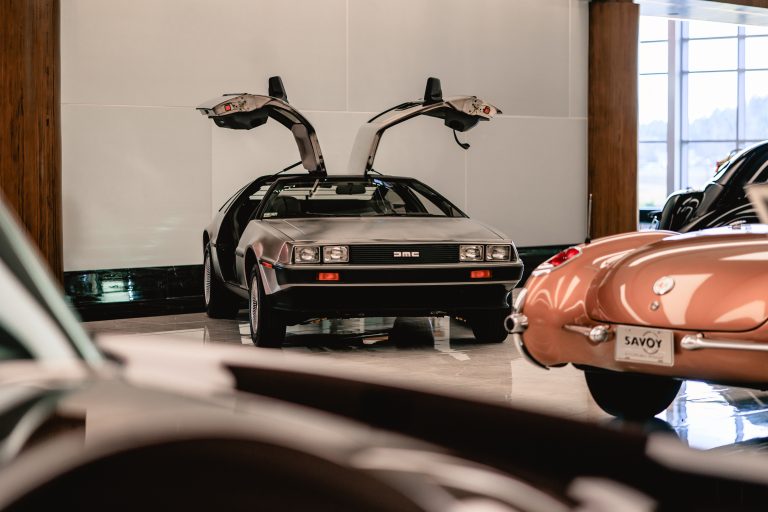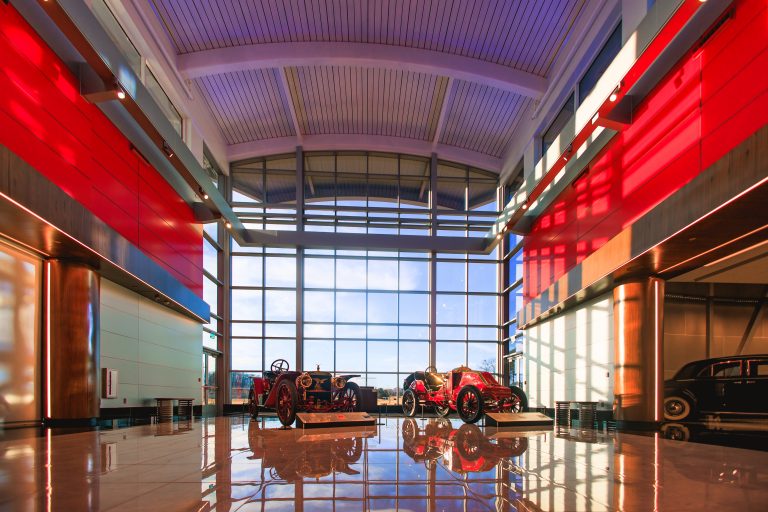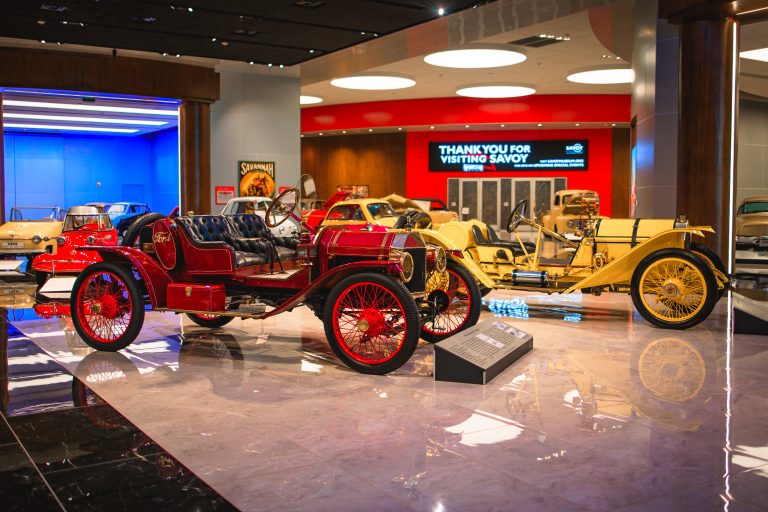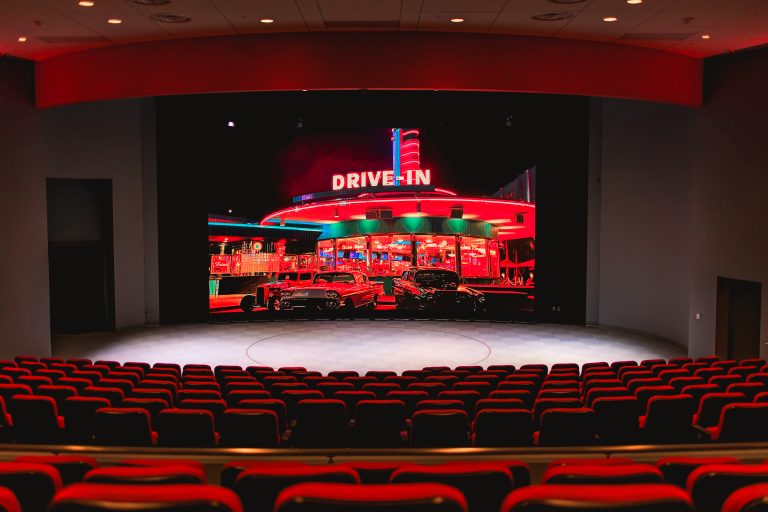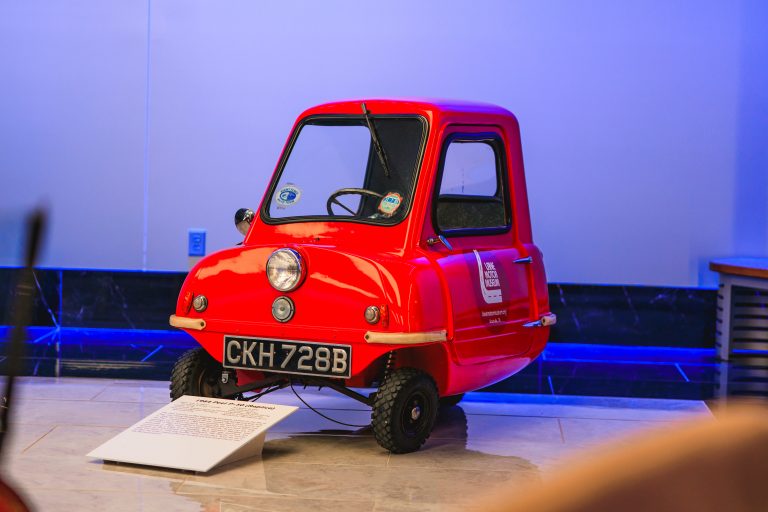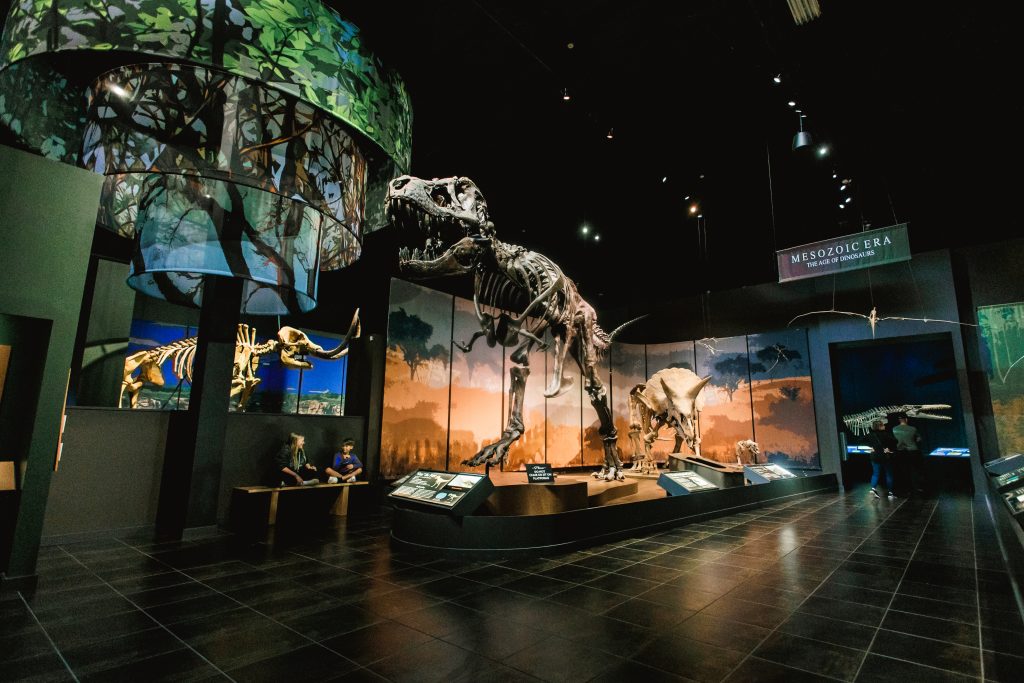
Photos Ivan Felipe
Tellus Science Museum
Tellus Science Museum is an expansion of the Weinman Mineral Museum, a 9,000-square-foot facility built by the city of Cartersville in 1983. In 2001, the Weinman became part of Georgia Museums Inc., a 501(C)(3) public charity, and a much larger museum was envisioned. Tellus opened the doors of its 120,000-square-foot science facility in 2009.
This museum provides unique educational opportunities to the region. Nowhere else in the Southeast can visitors experience exhibits and programs on rocks and minerals, dinosaurs, transportation technology, hands-on science, astronomy, and alternative energies, all in one institution. Additionally, the Museum showcases the only all-digital planetarium in the region open for daily public shows and a state-of-the-art 20-inch telescope in the observatory. Since opening in 2009, Tellus has served nearly 2.6 million visitors including more than half a million schoolchildren who have participated in the museum’s STEM programs.
There is plenty to see and do at one of four permanent exhibit galleries at the Tellus Science Museum; the Weinman Mineral Gallery, the Fossil Gallery, the Millar Science in Motion Gallery (a transportation gallery), and the Collins Family My Big Backyard (an interactive, hands-on science gallery).
The museum’s collections include minerals, gems, meteorites, and fossils. The primary focus is collecting these geological specimens relating to Georgia and the Southeast. Tellus has the best and most comprehensive collection of Georgia minerals in the world, and the museum’s fossil collection ranks nearly as high. The collection also includes transportation-related objects such as automobiles, aircraft, and hardware related to space exploration. The museum’s curatorial staff actively adds to the mineral and fossil collection through purchases, seeking donations, and field collecting. A team of curatorial staff, volunteers, and interns catalog new specimens and add them to the museum’s database. They are also involved in preparing specimens for exhibit.
The Vulcan Materials Gem Panning and the Vesta Dalia Fossil Dig are two popular exhibits. Here, one can pan for gems, dig for fossils, and keep their finds. The Bentley Planetarium is also a favorite and offers exciting shows every 45 minutes. In addition, the museum offers a wide array of special events, evening and daytime lectures, workshops, symposia, and other public programs.
Quote: Jose Santamaria
“My favorite thing to do is to wander the galleries, see couples, or families, interact with the exhibits, and hear their comments. I love hearing that they learned something new or that they were ‘Wowed’ by something they saw. They’re seeing things that they don’t get to see anywhere else in the Southeast. I also love working with a dedicated, professional, and enthusiastic staff to make the museum the exceptional experience that it is.”
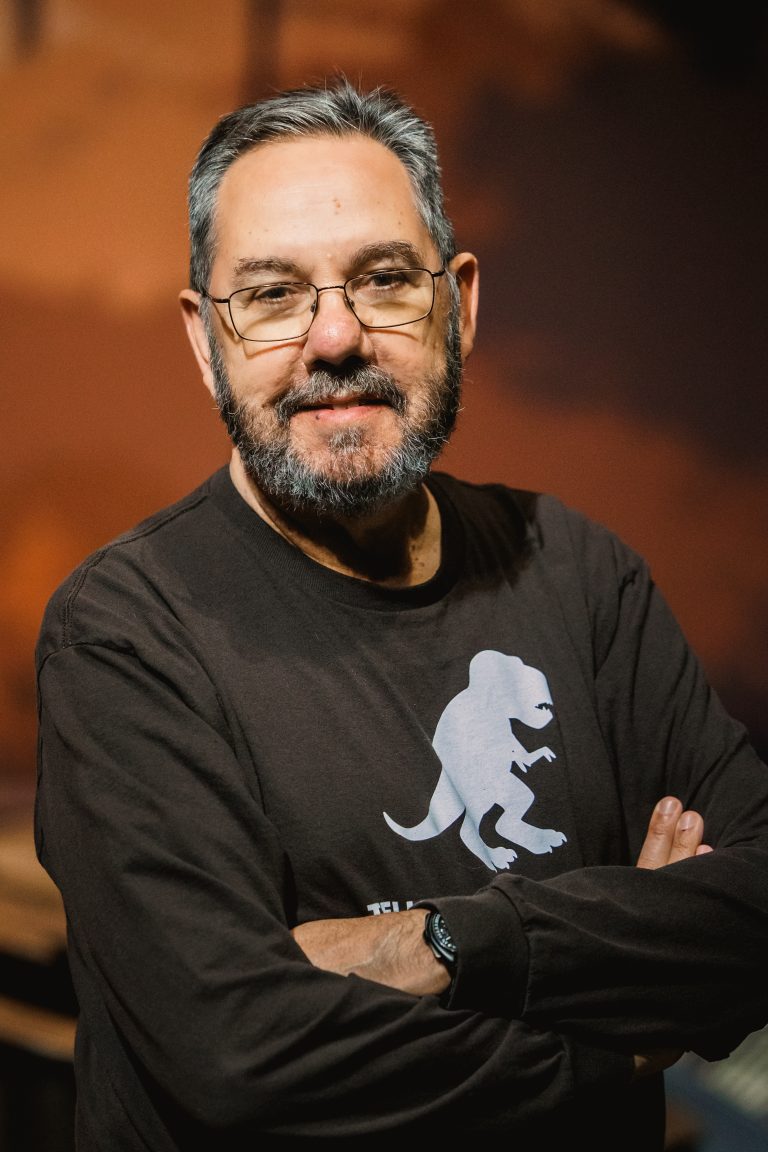
Booth Western Art Museum
The Booth Western Art Museum was started in 2003 by an anonymous family. These individuals, who call Cartersville home, were western art collectors for many years and wished to share their art with the community. The Museum was named after their good friend and mentor, Sam Booth.
The Museum’s collection is everything and a lot of work goes into storing and maintaining it. The curatorial department is elite in keeping its collection safe as art always has to be stored at a certain temperature and humidity. Temporary exhibits are exchanged every three to four months in four galleries, resulting in 12 to 15 exhibitions per year, the most in any Georgia art museum. With galleries changing and a total of 18 making up the Museum, there is constantly something new to see.
Among all of these fun exhibits, this family-friendly museum offers educational fun for everyone. Sage Brush Ranch is an interactive, hands-on play area designed for kids. History buffs are sure to enjoy the War is Hell gallery where you can study battles in chronological order. Original letters from every US President are displayed in the Carolyn & James Millar Presidential Gallery and Native American artifacts can be found in Artful Objects of the West. And for those that have a passion for Western Art, the Remington to Contemporary Western Art exhibit hosts the best. The staff of the museum often refer to it as “art for people that don’t like art.”
The Booth offers free admission to the public on the first Thursday of every month and countless events for children and adults year-round.
Quote: Grace Adams
“I couldn’t ask for a better place to work. Leaving every day knowing I have promoted and brought people of all demographics into the Booth to learn about America’s history and the West is so rewarding. Being a horseman myself I am always in awe of the Museum and its art, it makes for a great lunch break!”
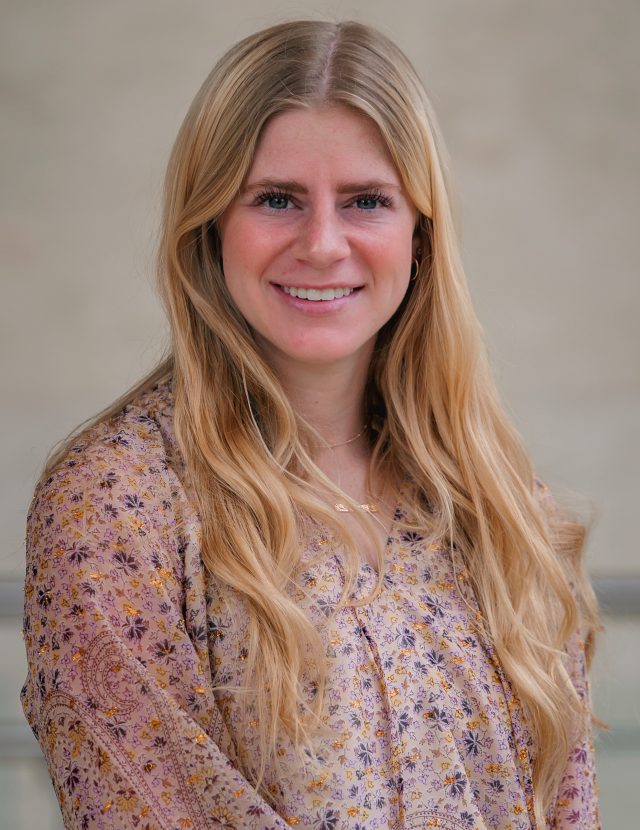
Bartow History Museum
The Bartow History Museum officially opened its doors on April 7, 1987, under the name The Bartow History Center. The museum was originally part of what was known as the Etowah Foundation whose first location was in an old pool hall building before it moved to 13 North Wall St on the Downtown Square. Finally, after years of restoration, the museum was able to move into its current home in the 1869 Courthouse, located at 4 East Church St.
The museum’s collection is comprised of a variety of objects that represent the history of Bartow County. From local pottery to military uniforms, to plows and sewing machines, this collection is as eclectic as the people who call Bartow County home. A Registrar is responsible for overseeing donation and cataloging procedures, as well as regular object maintenance. An archival/paper collection is separate from the other objects and is managed by an Archivist. Much like the Registrar, the Archivist is in charge of handling donations, cataloging, and maintenance, but she also assists researchers on a regular basis. Both of these collections are cataloged using software that acts as a digital index of each item’s physical location.
The museum offers educational programming for people of all ages. They often host school field trips for grades K-12 as well as Traveling Trunks, a program that brings the museum into classrooms. In addition to these school offerings, the museum offers summer and Girl Scout camps and works with local daycares and afterschool care programs to bring a museum experience to their campuses.
And while plenty is offered for the little ones, there is so much for adults of all ages to enjoy. They host a variety of lecture events by speakers ranging from professors and historians to local business people. And you won’t want to miss their Sip n’ Strolls, which are Downtown walking tours with historic themes. Participants learn about local history, get to stop at local businesses they might not normally frequent, and sip wine and enjoy snacks along the way. You can partake in workshops, cemetery tours, bus tours, and holiday-themed programming as the seasons allow and the museum is home to the quaintest of gift shops and sells a variety of locally crafted goods.
Quote: Lauren Storey-Rhodes
“The thing I love most about my job is getting to be at the center of my community. I grew up in Cartersville, and as a teenager, I was pretty determined that I wanted to leave. But now, as an adult, I see it with different eyes and I think working at the museum has played such a huge role in that. Not all places are fortunate to have institutions like the Bartow History Museum, which have people that are so dedicated to preserving everyday stories. Our Director, Trey Gaines, and our Archivist, Sandy Moore, have both been at this museum for 24 years. They built the archives from nothing but a few newspapers to a fully functioning research center because they care about people having a place to connect to their past and learn about it.
Nothing makes me smile more than when people come in and find the family member they’ve always heard stories about. Or when a student comes in on a field trip and learns more about something they’ve read in their history book. It clicks with them that it was real, that it happened where they live, and then their faces kind of light up with realization.”
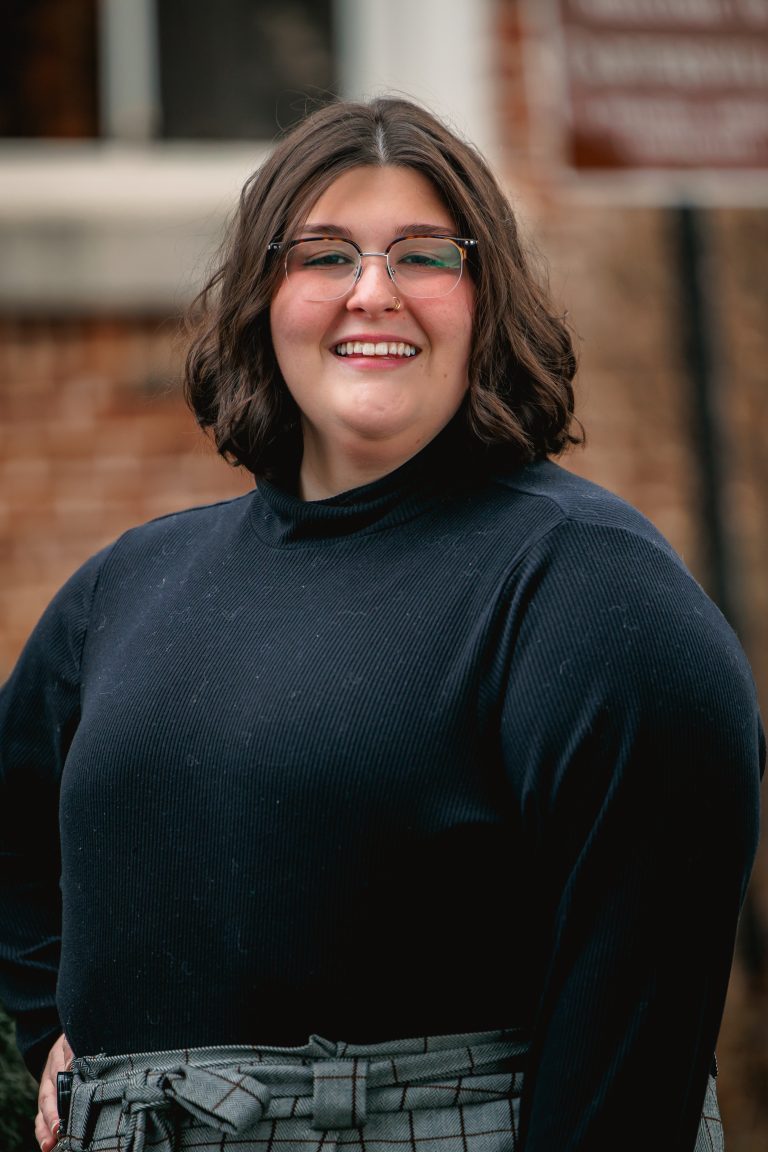
Savoy Automobile Museum
The Savoy Automobile Museum opened to the public on December 8th, 2021 after the grading of the property began in 2018, construction of the Vehicle Storage Building in 2019, and finally the museum in 2020. The campus is a stunning 37 acres and consists of a Vehicle Storage Building, Showgrounds, and an outdoor
Pavilion area. The beautiful scenery is quite hard to miss, which is a good thing because you won’t believe what is inside this 65,000-square-foot building. The museum houses a Great Hall, four exhibition galleries, a state-of-the-art Theater, an extensive Research Library, the Savoy Café, two private Dining Rooms, the Savoy Store, Archives, and administrative offices.
Within its exhibits is entertainment for the serious car collector or a casual car enthusiast. The museum exists to educate and entertain by providing visitors with unforgettable experiences. And for those looking for a truly educational visit, be sure to get in on a Highlight Tour which is offered every Wednesday and Thursday at 11 am for the first 15 guests to arrive with regular admission.
The Savoy Automobile Museum got its name during the clearing of the property when an abandoned 1954 Plymouth Savoy was discovered on the grounds. This Savoy has been preserved and is now part of the landscape. There are plenty of other cars to see as the museum’s car collection sits at around 100 cars, with about 40 of those being displayed at a time. Savoy also hosts events on their site including car shows, car-club meetings, concerts, cruise-ins, demonstrations, and lectures. And art enthusiasts will be happy to see a substantial collection of original, automotive-themed art displayed throughout the museum.
If you love automobiles and have a passion for automobile history, you can serve the community by becoming a Savoy volunteer. They are always looking for volunteers who enjoy learning and making new friends.
Quote: Lisa Romans
“As the Director of Marketing, I enjoy the opportunity to promote the museum, the exhibits, and the vehicles to our audience. Included are a wide and exciting array of vehicles, some of which individuals might not be familiar with or had the opportunity to see in person. For instance, since our opening last December some of the vehicles we have had on display include a 1933 Pierce-Arrow, Silver Arrow, a 1948 Tucker #144, Richard Petty’s 1970 Superbird, and a 1970 Mercury Cyclone Spoiler II with Ford 429/375 HP.”
